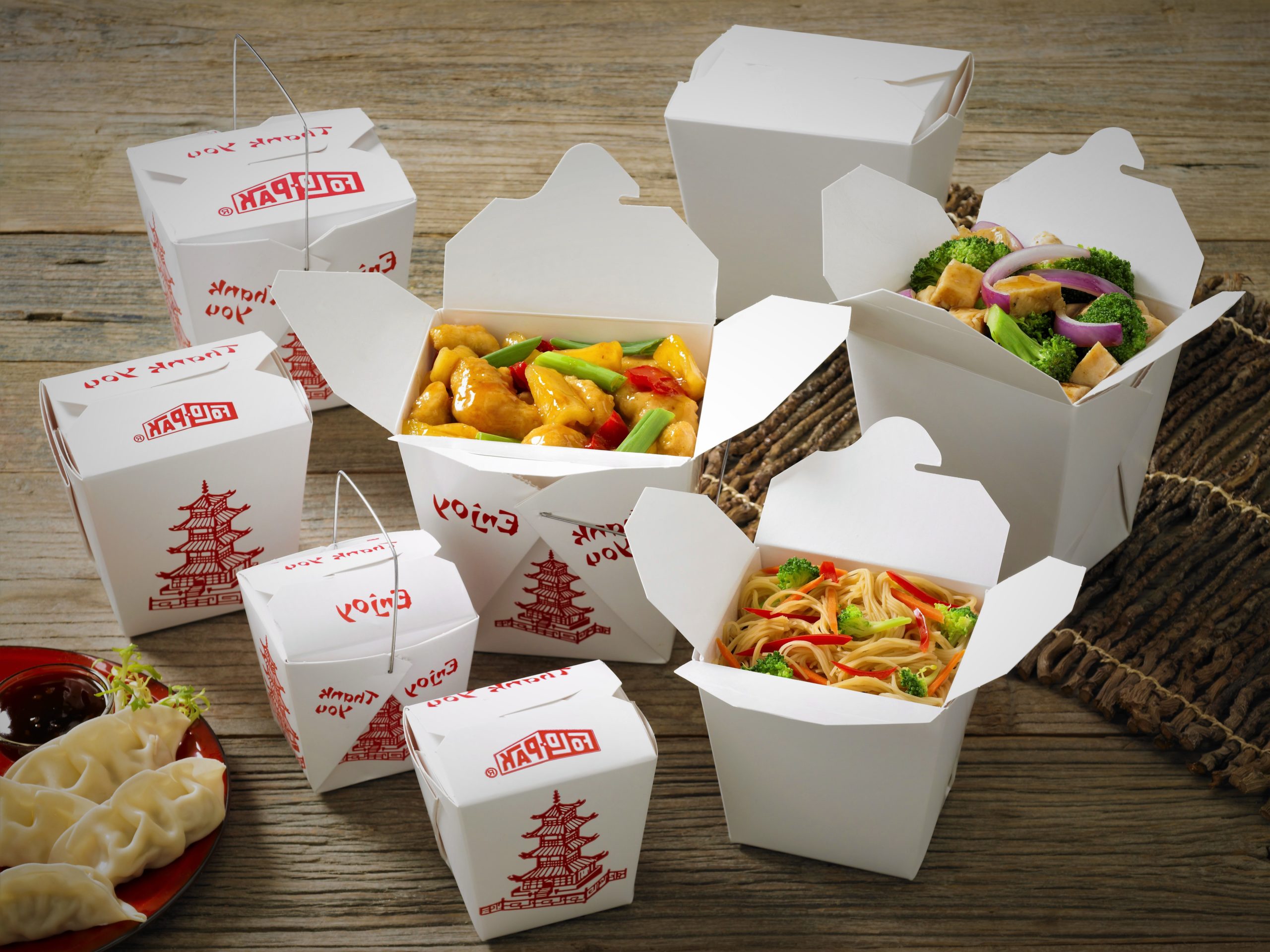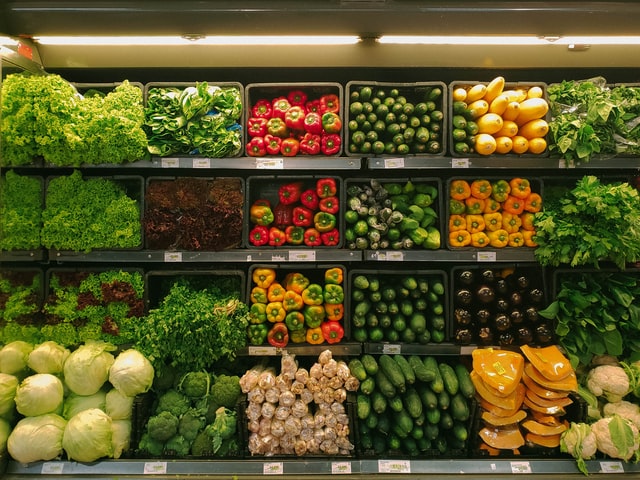Who does not love Chinese take-out.?
Here in United States, and in New York city especially, it becomes part of the scenery and part of the lifestyle. I would does not really matter I would you are single, in a relationship or have a family and kids. Chinese food is always wanted. Here in NYC we live in take pout culture, where ethe food is being delivered straight to your door, or you can quickly go to your local place, located almost on every other corner and quickly get something to eat
The characteristic of it, is that it is not only extremely convenient, but also price wise, it is quite inexpensive. Most restaurant will offer you a smaller, and even cheaper, lunch portions, or full-size meal, yet still with exceptionally good price.
The idea behind it, was brought to USA through so called “California gold rush”, when in early Eighteen Century, more than 30 thousand immigrants came from Canton (Guangdong) region of China. They were working as miners, building the train tracks, and doing construction. The laws were created, that has prohibited them from owning any land, and they were forced to live on closed neighborhoods, ghettos, called “Chinatown”. Since a necessity is a mother of invention, they started to open small diners and restaurants, cooking what they knew from home, but using local ingredients, basically what was available here. And that is the birth of modern American Chinese cuisine, that have not much to do, with the original one. Nevertheless, it become immensely popular across the whole country, and become unbreakable part of the multicultural fabric that’s America is Made of.
So, without further ado, lets focus on the food.
I present you today an ultimate guide to Chinese food, invented in America.

General Tso chicken – Chunks of white chicken covered in tempura batter, deep-fried, and seasoned with ginger, garlic, sesame oil, scallions, and hot chili peppers. Believed to be named after Qing Dynasty politician and military leader Zuo Zongtang, often referred to as General Tso.
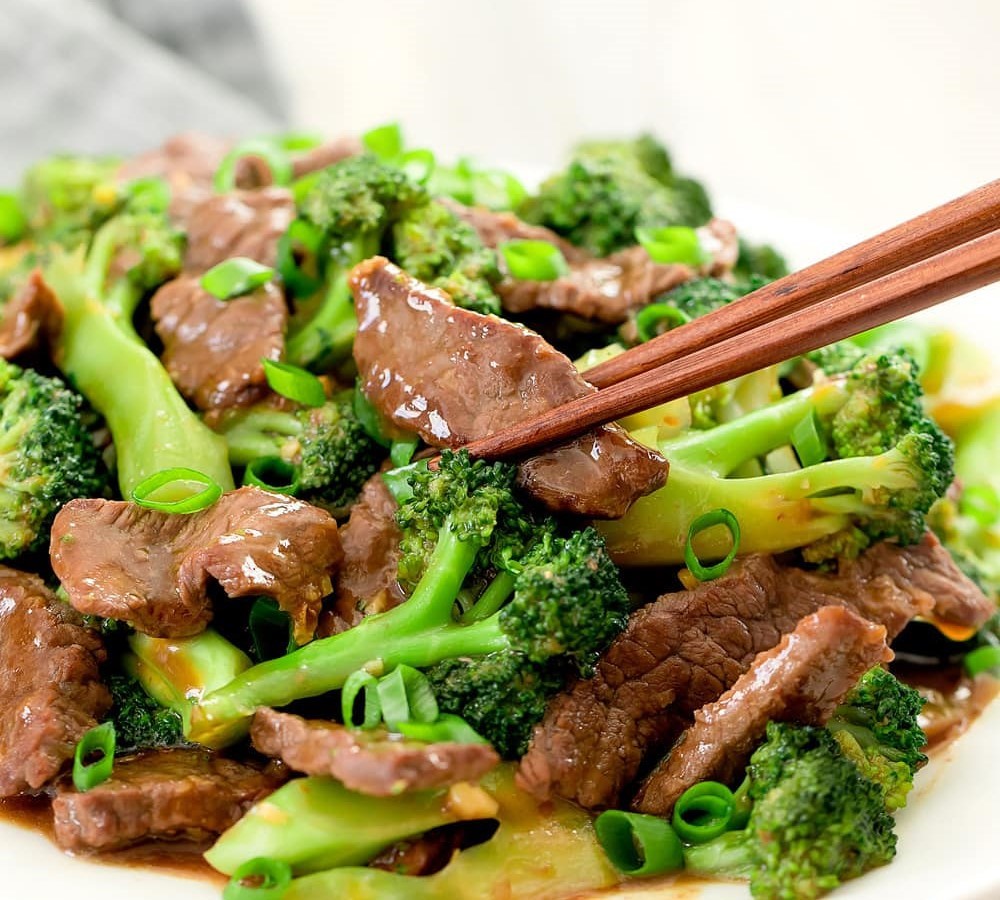
Beef and broccoli – flank steak cut into small pieces, stir-fried with broccoli, and coated with a dark sauce made with soy sauce and oyster sauce and thickened with cornstarch. Another immensely popular option use chicken (Chicken and broccoli), or shrimp or scallops (shrimp and broccoli; scallops and broccoli).
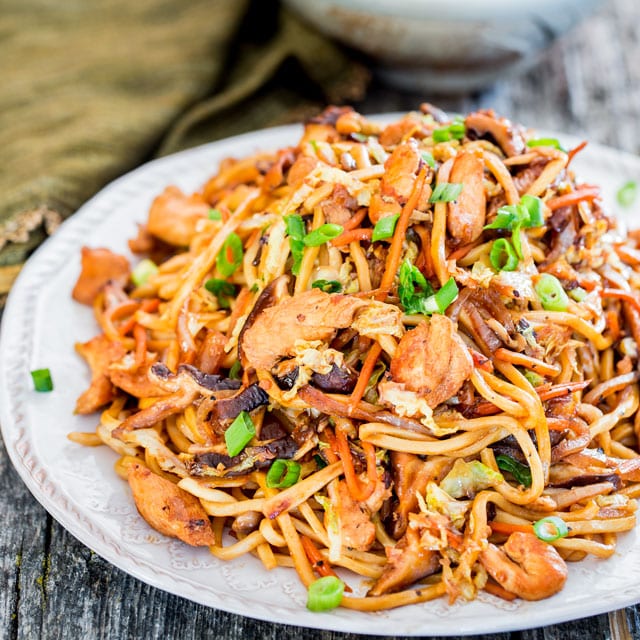
Lo main – “stir up noodles”. These noodles are commonly made with eggs and flour. Thick, spaghetti shaped noodles are pan fried with vegetables (mainly bok choy and Chinese cabbage (napa)) and meat. This dish had many variations, from being purely vegetarian, to being made with pork, beef, Chicken or seafood.
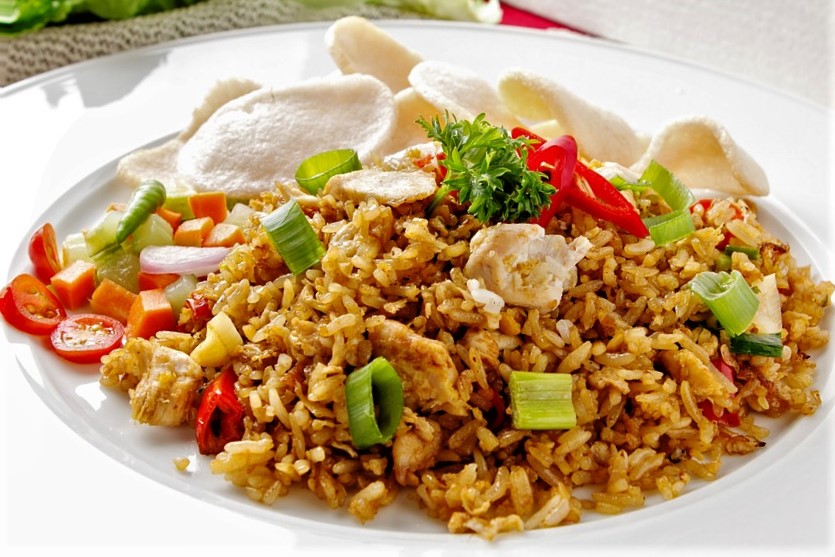
Fried rice – fried rice dishes are popular offerings in American Chinese food due to the speed and ease of preparation and their appeal to American tastes. Fried rice is generally prepared with rice cooled overnight, allowing restaurants to put leftover rice to good use (freshly cooked rice is less suitable for fried rice). The Chinese American version of this dish typically uses more soy sauce than the versions found in China. Fried rice is offered with different combinations of meat (pork, chicken and shrimp are the most popular) and vegetables.
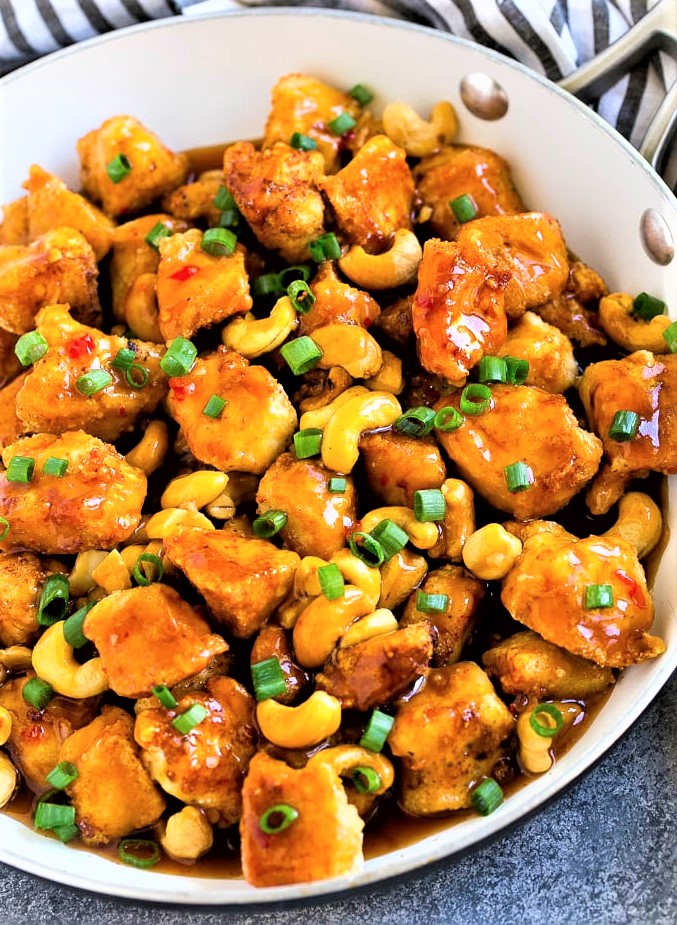
Cashew chicken – Stir fried tender pieces of white chicken with, onions , peppers and cashews. in soy sauce based brown sauce, served over rice.
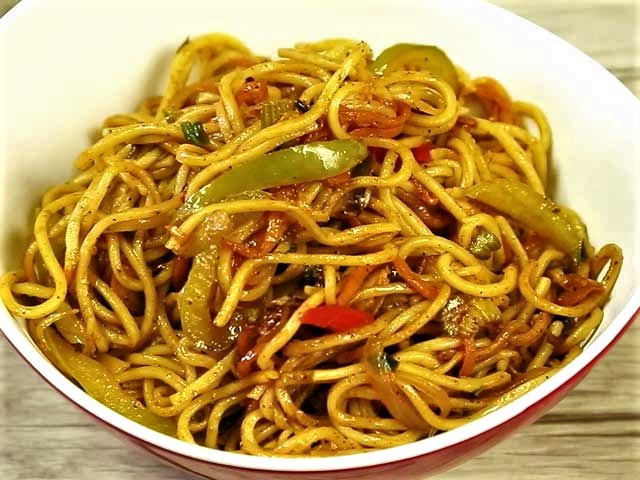
Chow mein – literally means “stir-fried noodles”. Chow mein consists of fried crispy noodles with bits of meat and vegetables. It can come with chicken, pork, shrimp or beef.
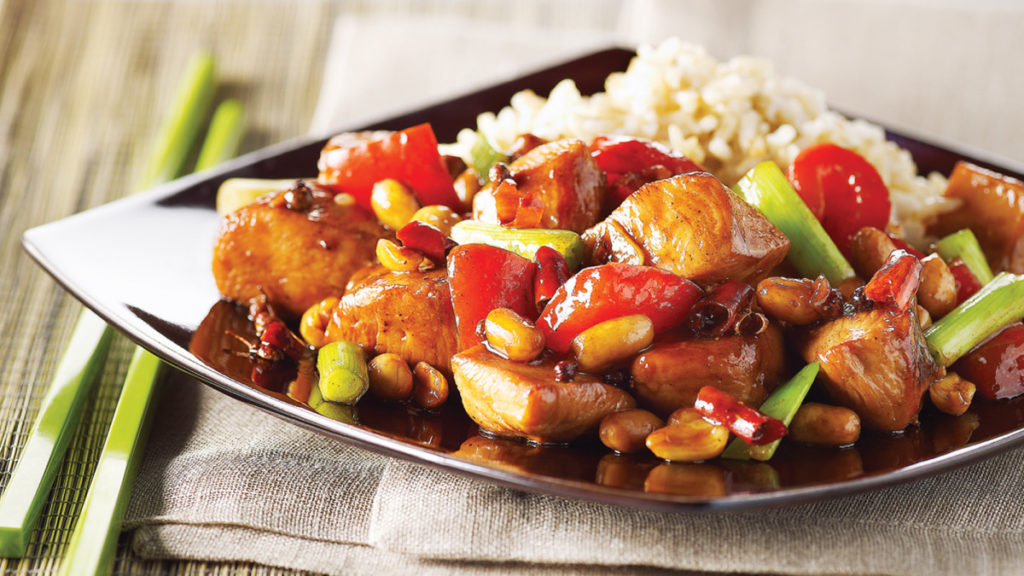
Kung pão chicken – The Sichuan dish is spicy hot, but the versions served in North America tend to be less so if at all, and sometimes leave out the Sichuan pepper that is a fundamental part of the original dish.
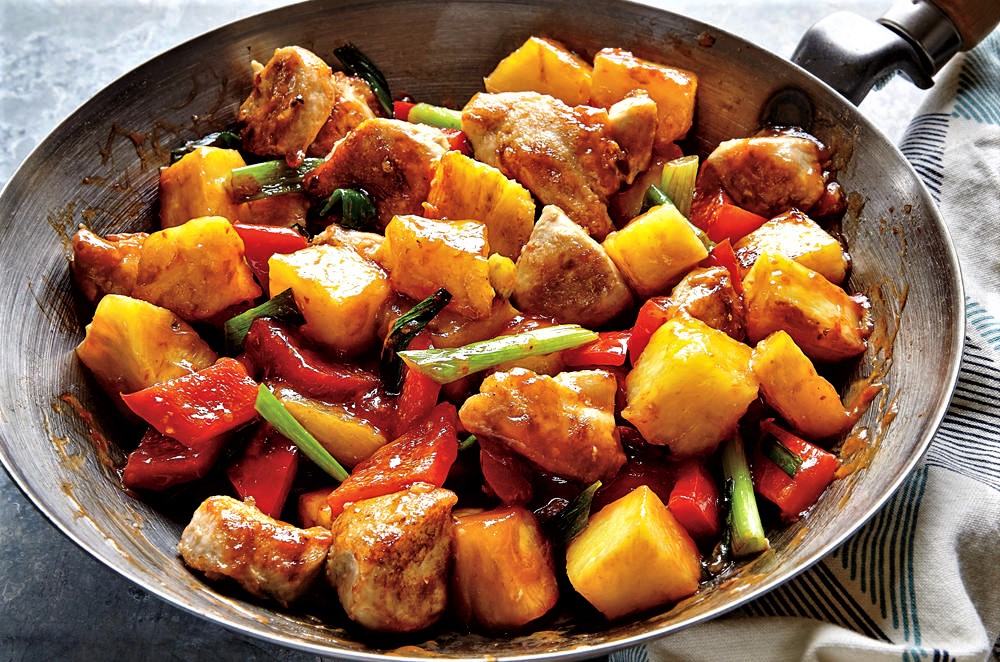
Sweet and sour chicken – Sticking with chicken, the sweet and sour variety beats out orange chicken when it comes to U.S. takeout orders. The prep is similar: Chicken is battered and deep-fried. Rather than orange-flavored chili sauce, it is topped with sweet and sour sauce. It is often paired with sliced green peppers, onions, and pineapple.
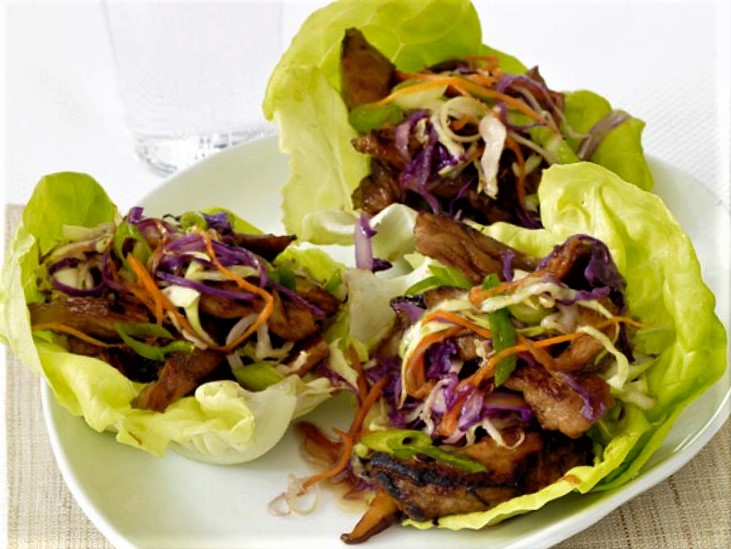
Moo shu pork – The original version uses more typically Chinese ingredients (including wood ear fungi and daylily buds) and thin flour pancakes while the American version uses vegetables more familiar to Americans, and thicker pancakes. This dish is quite popular in Chinese restaurants in the United States, but not so popular in China.
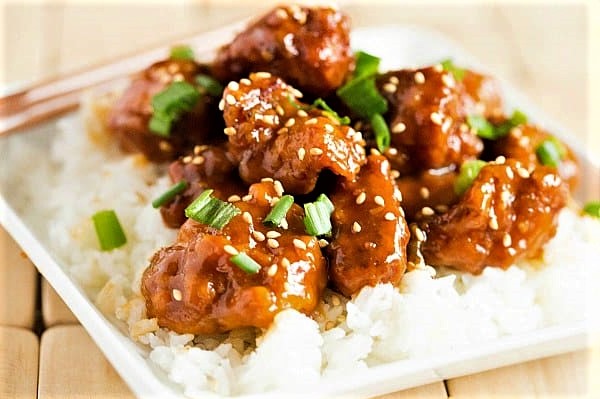
Sesame chicken – boned, marinated, battered, and deep-fried chicken which is then dressed with a translucent red or orange, sweet and mildly spicy sauce, made from soy sauce, corn starch, vinegar, chicken broth, and sugar.
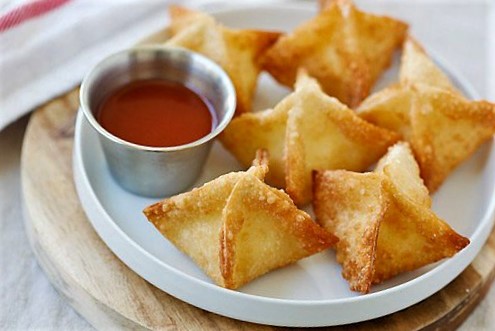
Crab Rangoon – cream cheese little dumplings. Wonton skins, generally stuffed with artificial crab meat (surimi) and cream cheese. Fried, until crispy. Served with sweet sauce for dipping.
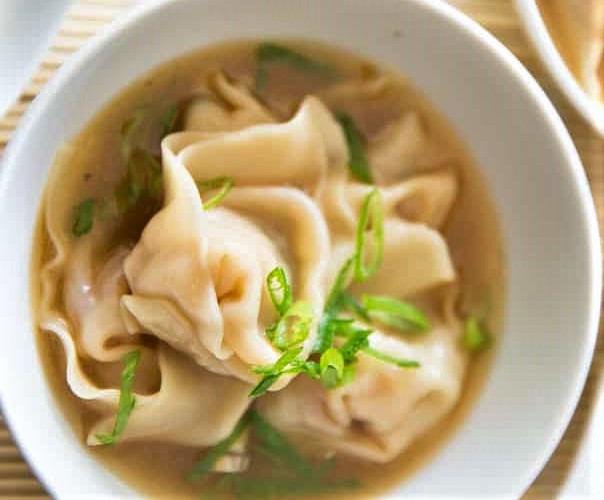
Wonton soup – In most American Chinese restaurants, only wonton dumplings in broth are served, while versions found in China may come with noodles. In Canton, Wonton Soup can be a full meal, consisting of thin egg noodles and several pork and prawn wontons in a pork or chicken soup broth or noodle broth.
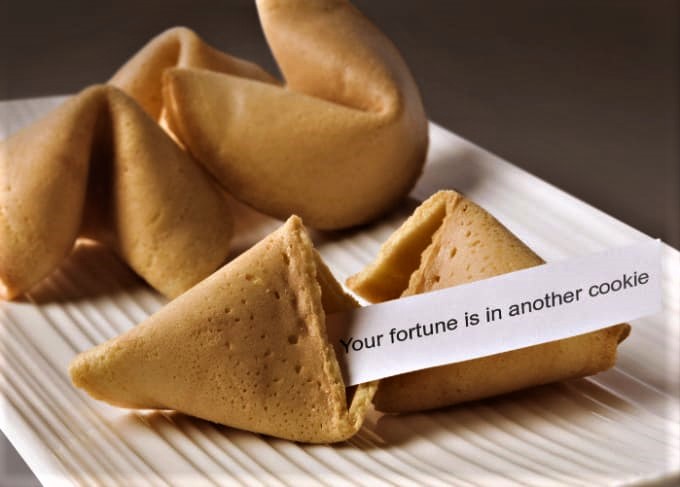
Fortune cookies – invented in California as a Westernized version of the Japanese omikuji senbei, fortune cookies have become sweetened and found their way too many American Chinese restaurants.
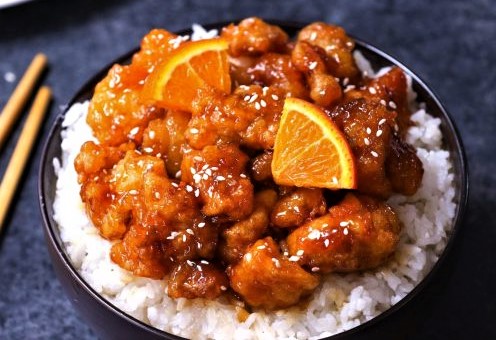
Orange chicken – chopped, battered, fried chicken with a sweet orange flavored chili sauce that is thickened and glazed. The traditional version consists of stir-fried chicken in a light, slightly sweet soy sauce that is flavored with dried orange peels.
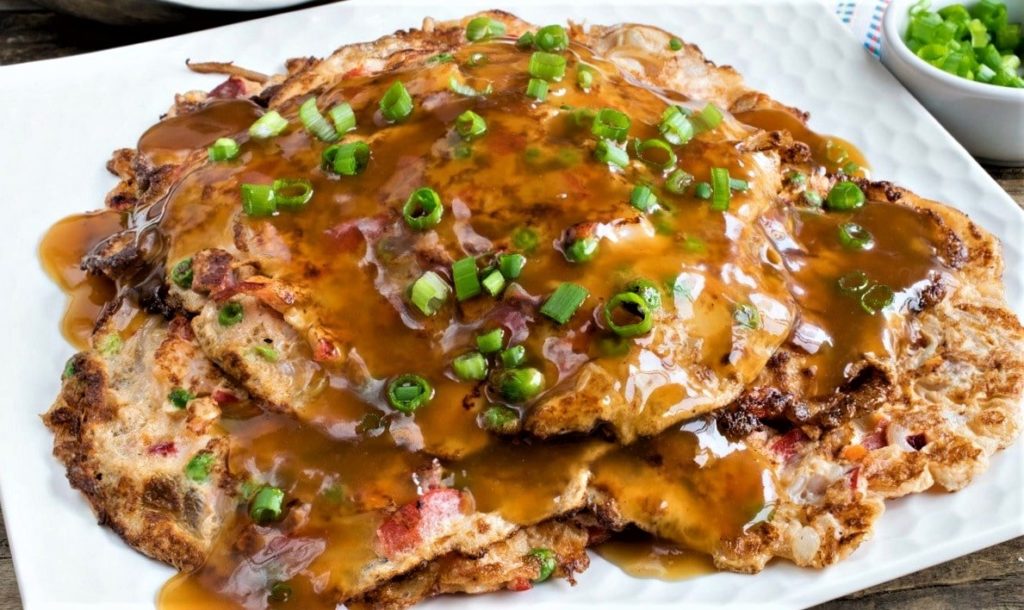
Egg Foo young – Chinese-style omelet with vegetables and meat, usually served with a brown gravy. While some restaurants in North America deep-fry the omelet, versions found in Asia are more likely to fry in the wok.
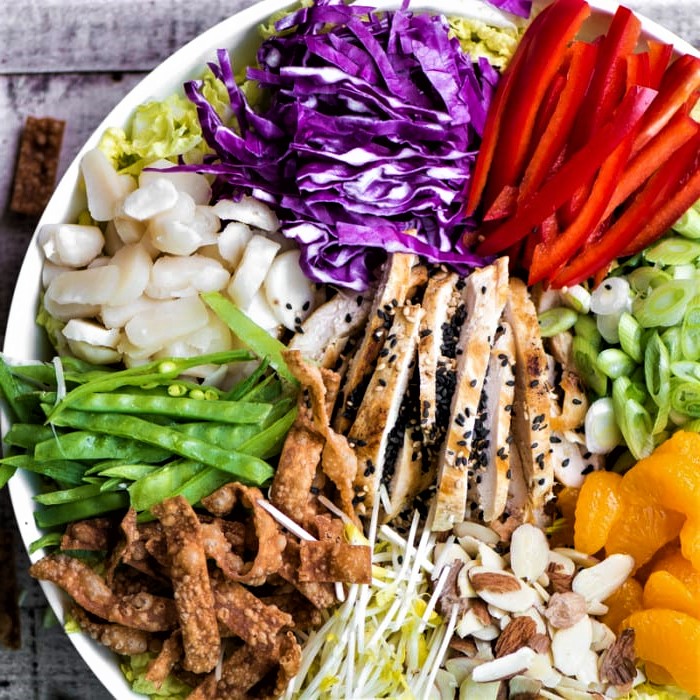
Chinese chicken salad – usually contains sliced or shredded chicken, uncooked leafy greens, crispy noodles (or fried wonton skins) and sesame dressing. Some restaurants serve the salad with mandarin oranges.
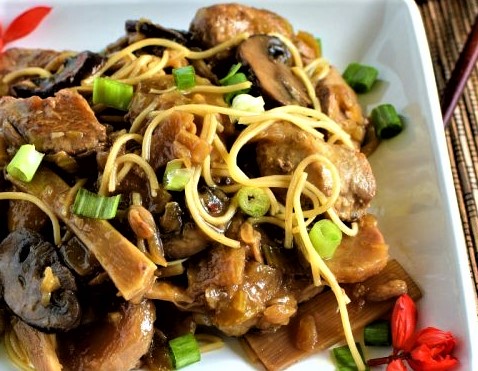
Chop suey – literally means “assorted pieces” in Chinese. It is usually a mix of vegetables and meat in a brown sauce but can also be served in a white sauce.
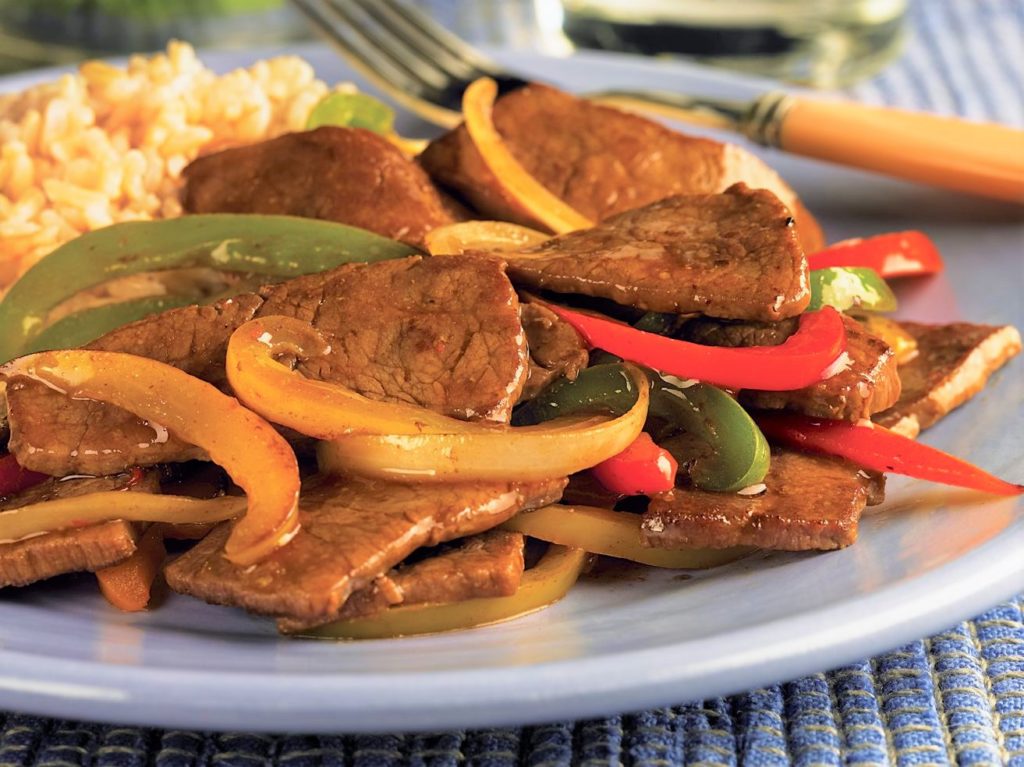
Pepper steak – consists of sliced steak, green bell peppers, tomatoes, and white or green onions stir-fried with salt, sugar, and soy sauce. Bean sprouts are a less common addition.
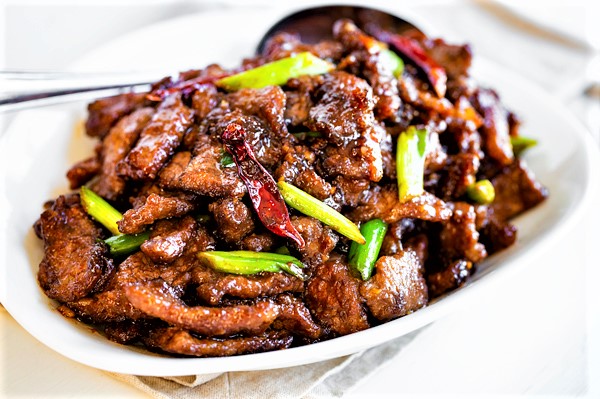
Mongolian beef – sometimes called “Royal Beef”, thinly sliced beef, fried with scallions or white onions in a spicy and often sweet brown sauce. Served with fresh broccoli and rice.
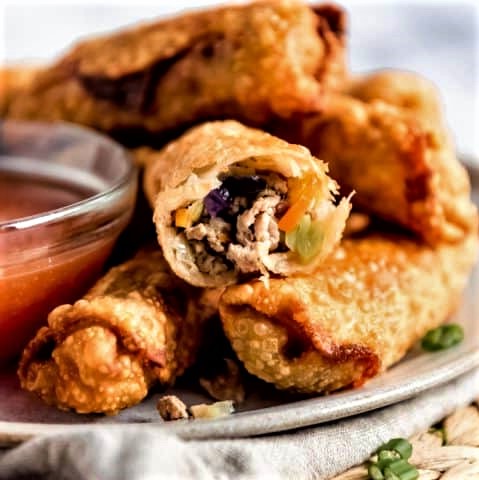
Egg roll – while spring rolls have a thin, light beige crispy skin that flakes apart, and is filled with mushrooms, bamboo, and other vegetables inside, the American-style egg roll has a thicker, chewier, dark brown bubbly skin stuffed with cabbage and usually bits of meat or seafood (such as pork or shrimp), but no egg.
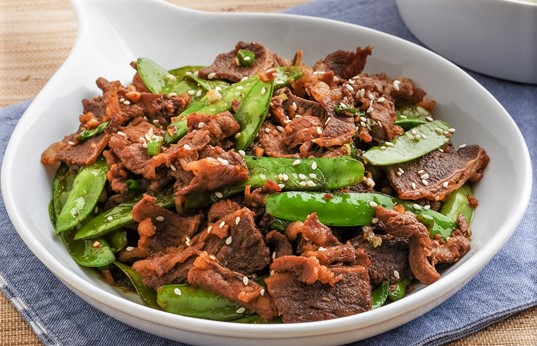
Ginger beef – Tender beef cut in chunks, mixed with ginger and Chinese mixed vegetables.
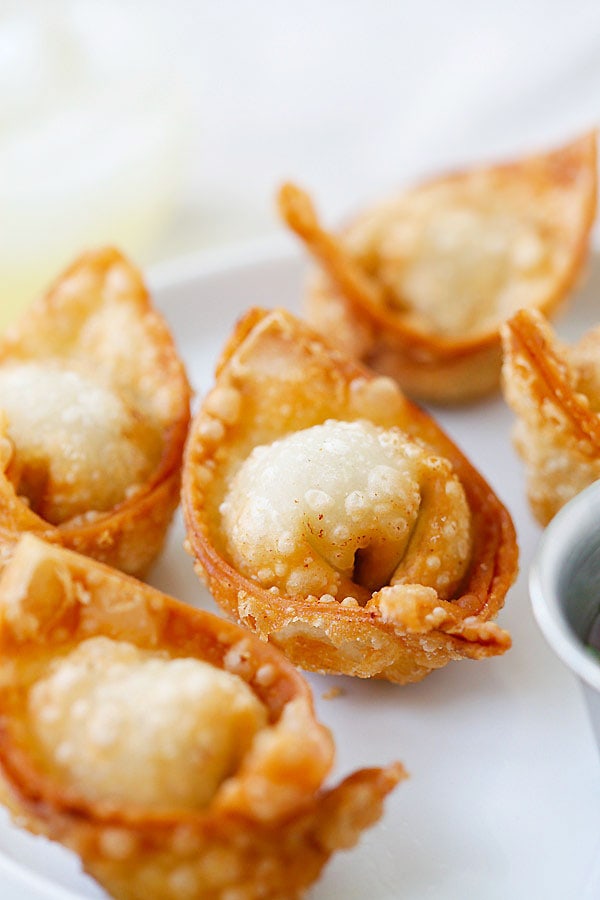
Fried wontons – Almost like crab Rangoon, but the filling made of minced pork. Wrapped in a wonton skin and deep fried. Served with red sweet sauce for dipping.
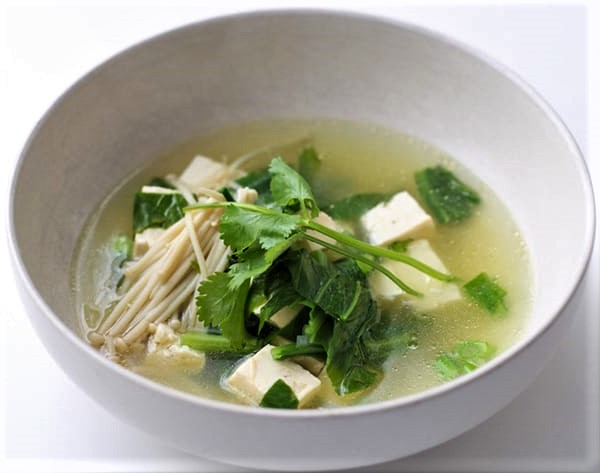
Tofu vegetable soup – light vegetable broth, filled with big chunks of tofu, bok choy, onions and mushrooms. personally my favourite dish, especially when I have a light cold..
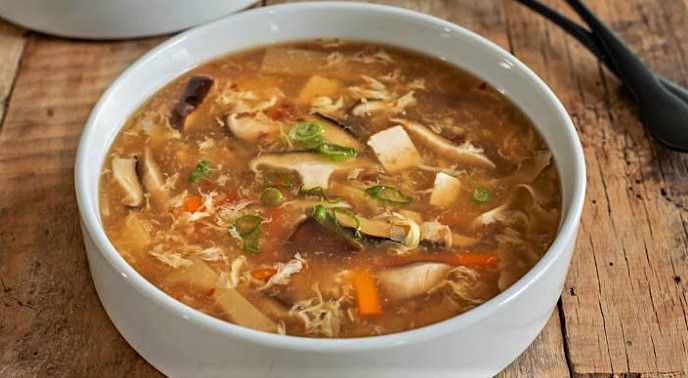
Hot and sour soup – This salty soup is one of the lighter options you will find on a takeout menu. The meat-based broth includes bamboo shoots, sesame oil, egg, and other ingredients to make for a relatively healthier option when you are ordering out.
So, what is are your thoughts… which American Chinese dish is your go to, when it comes to calling your local Chinese restaurant…
